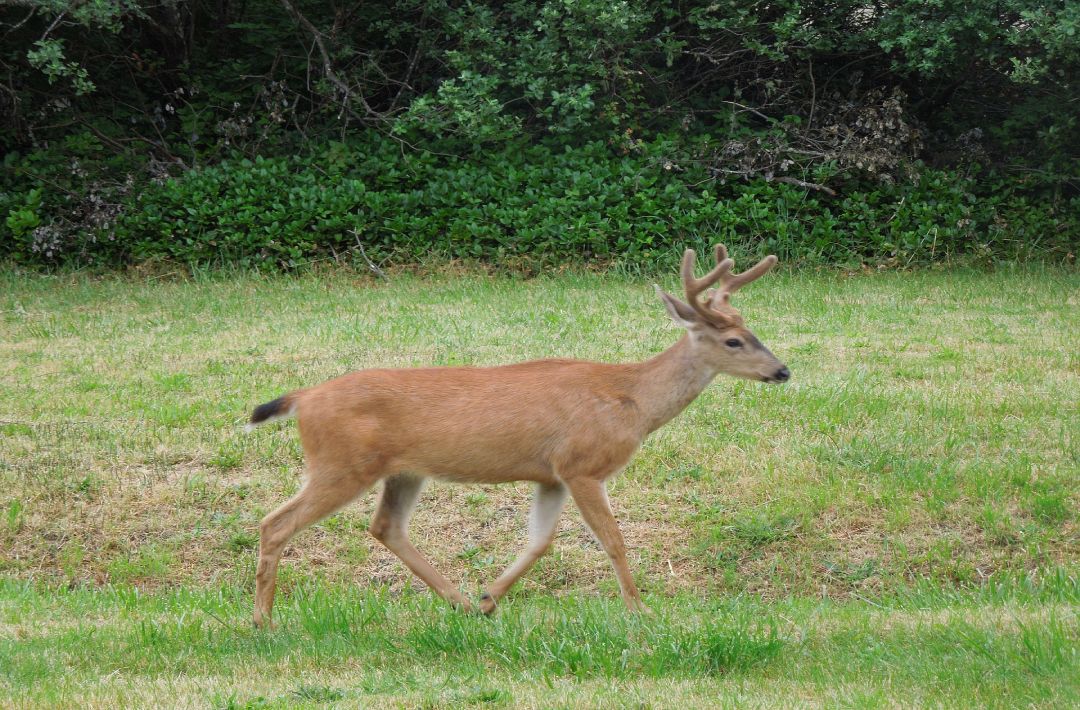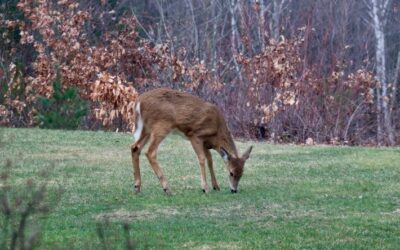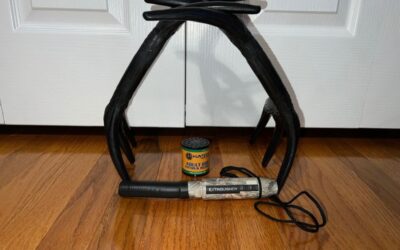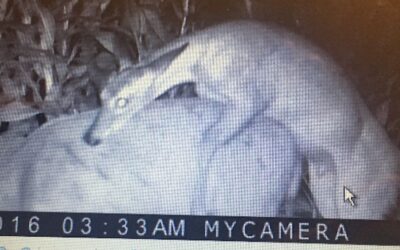Why should a hunter even care about how fast deer can run? Well, there are a few things that hunters can benefit from by knowing how fast whitetail deer are.
A few of those reasons are:
- Just know more about the whitetail deer.
- Understand how fast whitetail deer move through different areas.
- Lastly, how to read the speed of a deer and use it to your advantage.
So the question stands, How fast is a whitetail deer?
How Fast Are Whitetail Deer?
The top speed of a male whitetail deer, also known as an Odocoileus Virginianus, is between 25-30 miles per hour. This high speed cannot be endured for a significant amount of time.
In most cases, a mature whitetail can run at its top speed for a couple of hundred yards before becoming overly tired. The majority of deer populations have a top speed of 30 miles per hour for the mature, healthy, and male deer species.
Fastest Deer Species
The maximum speed that a mule deer can run in short distances is roughly 35 miles per hour. The red deer, which have reddish-brown coats, are the fastest deer species. They hit top speeds at 50 miles per hour in short bursts of less than a couple hundred yards.
So the red deer is the fastest deer species.
What Allows Whitetail Deer to Run that Fast?
Deer have a mobile body that can allow them to not only run at top speeds but to also be agile. Deer have softly rounded hooves that increase the amount of surface area hitting the ground and increase the amount of traction that they have to push off the ground with.
The hind legs of deer are very strong and can propel them fast and far. Also, they have a wider stance in comparison to a lot of other animals.
During the breeding season, adult females will run away from an average adult male deer and this can cause a burst in speed from both deer. This is often driven by testosterone that the bucks have in anticipation of the rut.
It is important to understand that rarely are deer running long distances at full speed. They would much rather walk and stop in a standing position while trying to move along the forest floor.
Distress signals that deer fawns (the ones with white spots) often give to young females to let the deer herd that they are in danger, can increase the rate that deer will run.
Another reason that deer can run for long periods of time and fast is because of their diet. Deer have a diet that is high in protein which makes them strong and nimble.
Whitetail Deer Compared to Other Animals
As we discuss how fast can deer run, it is imperative to give some comparisons to other animals besides the whitetail deer’s close relatives in mule and red deer.
Mountain Lions have a top speed is 50 miles per hour and I would think they are much more agile in the woods than whitetail deer.
Pronghorn antelope have a top speed of 61 miles per hour which is significantly faster than a whitetail deer.
The fastest land animal: Cheetahs have a top speed of 80 miles per hour which is over double the top speed of a whitetail deer.
Usain Bolt is known as the fastest human ever. His top speed is 27.33 miles per hour.
By no means are whitetail deer the fastest animal in places like South America, Central America, Southern Canada, or North America; however, they do have speed and can be extremely sneaky and hard to kill. This is what makes hunting them such a challenge and so fun!
Speed through Different Areas
Whitetail deer very seldom run at full speed. Sometimes hunters, including myself, think that Odocoileus Virginianus (whitetail deer) go in straight lines to get from food, to water, and to bedding. However, this is not the case. Whitetail deer move with strategy and curiosity.
Because of this, it is important for hunters to understand the different ways that deer move through their home ranges and how that can help a hunter read different situations.
Deer Through Bedding Areas
Female deer specifically move through areas in groups and oftentimes will follow the leader of the group. This can cause does to move faster through bedding areas. They do not run at top speeds. They move more in a brisk walk.
Whitetail bucks, on the other hand, will move methodically while in their bedding area. This is because the mature bucks understand that daylight hours are dangerous to the in autumn. Bucks will often move much slower and take more breaks in their walk as they are analyzing the area and ensuring their safety.
Speed Through Transition Areas
Young deer, female deer, and male deer move quickly through transition areas. They take fewer breaks, walk a little brisker, and move with the wind in their faces.
Speed in Feeding Areas
Once deer get to the main feeding area they oftentimes will stand there and feed for the night and just randomly move. They will stay alert and check their surroundings often, but they will not usually move in any sort of direction.
Speed Through Staging Areas
Staging areas are places where bucks specifically will wait till dark before going out into a food source. These areas are often thick and on the downwind side of the food source so that the buck can scent-check the food source for danger before entering it and starting to feed.
Time of Year
As I have talked about a little bit, the time of year will influence the way that deer navigate the woods. During the early spring, deer move relatively slowly.
During the late spring, young females as they are often times in the gestation period of carrying a baby deer inside of their stomach. The deer range in the summer also expands as the importance of safety is decreased. Severe winters can truly impact the amount that deer move.
Especially in late winter when temperatures are below freezing in the Midwest. Deer will move less because they need to slow their metabolism. During the rut, a few things happen that cause the speed of deer to change. First of all, young males will be ambitious in finding a white-tailed deer to mate with.
This will often create a new range that a buck is willing to cover. This range reaches much farther and is often what causes you to see bucks that you may have never seen on your property before the rut.
Read the Speed
Speed of deer can give you more intel into the situation and how you can react. When you understand how a deer is acting in the field, you can make informative decisions that will lead you to success.
Casual Walk
The casual walk that deer use to navigate the woods tends to be methodical and slow. They will often just mozy their way through the woods and eventually get to where they want to be. If you noticed that a deer is doing this, you can infer that the deer is calm and relaxed.
Brisk Walk
The brisk walk that whitetail bucks often use during the rut, is a critical sign that the deer you are watching has a specific destination that they are trying to get to or they are trying to scent check an entire area of the woods on the downwind side.
I often see this brisk walk performed by bucks in the pre-rut and mating season. Adult males will hit their scrapes, rubs, and find hot does with this kind of walk.
Galloping Run
The galloping run from a deer is often a sign of being spooked or busted out of an area. This is the most common way that you will see deer run. They can cover significant distances while running on a gallop.
However, they will not be running at full speed. You can often see the white tail of the deer if you have spooked them away from you. During gun season, hunting pressure increases and causes a lot of the deer to move through the woods in a galloping run.
The Sprint
Whitetail deer have the capability to run at full speed without a gallop. They will run in a sprint. They stay low to the ground and use both front and back legs to gain extra speed.
The amount of energy exerted for them to run like this is high and not sustainable for a long period of time. That is why you do not normally see them do this unless you have just shot that deer.
If you shot a deer and are watching how fast they run, you will notice that most of the time they run as fast as possible immediately, and then after they leave that specific area, they will slow down or take a dirt nap.
Conclusion
Deer move at speeds that make it nearly impossible to shoot them while on the run. But, anyone that has hunted before knows that deer are fast.
However, once we dove deeper into the speed of whitetails we can see how we can learn a lot by observing deer and how they move through the woods. This movement is a fundamental survival tool for deer. Without it, they would be much easier to hunt and would require less skill. Speed is also a great way to read a situation and when the right circumstances come along, you can use your other skills such as rattling, grunting, using scents from scent glands, and setting great stand locations.
You may also be interested in a free E-book to help you create a personal hunting game plan or a Free PDF that explains the 5 most important fundamentals for whitetail deer hunting.
If you have any questions or recommendations for new blog posts, please use the contact form.
Learn, Plan, Execute,
The Whitetail Teacher





